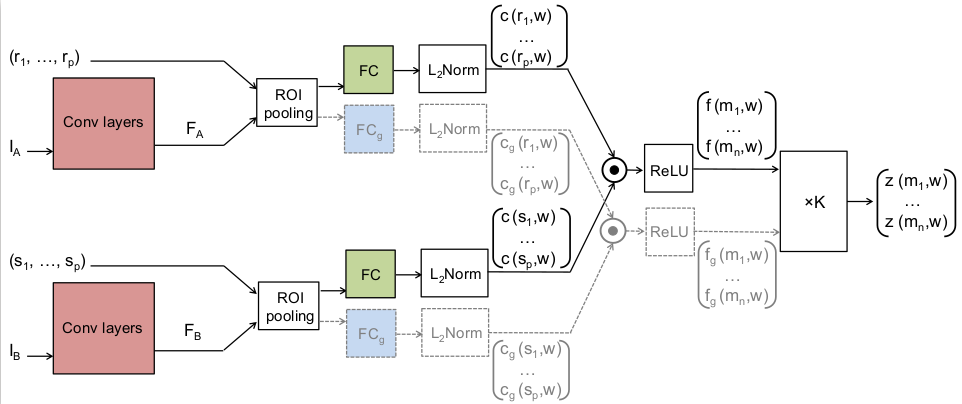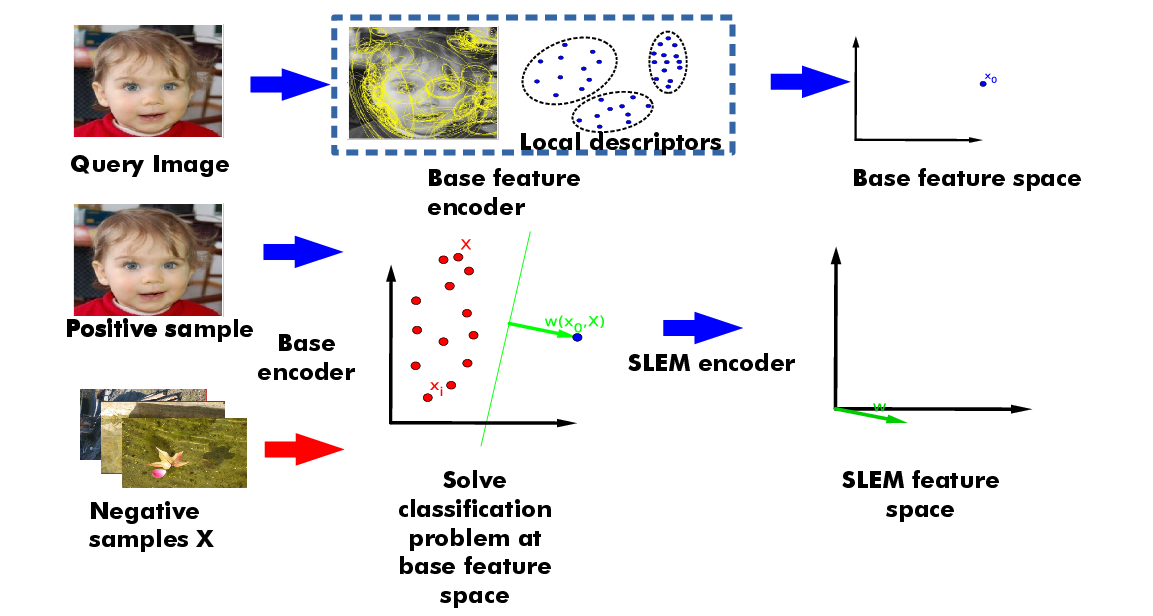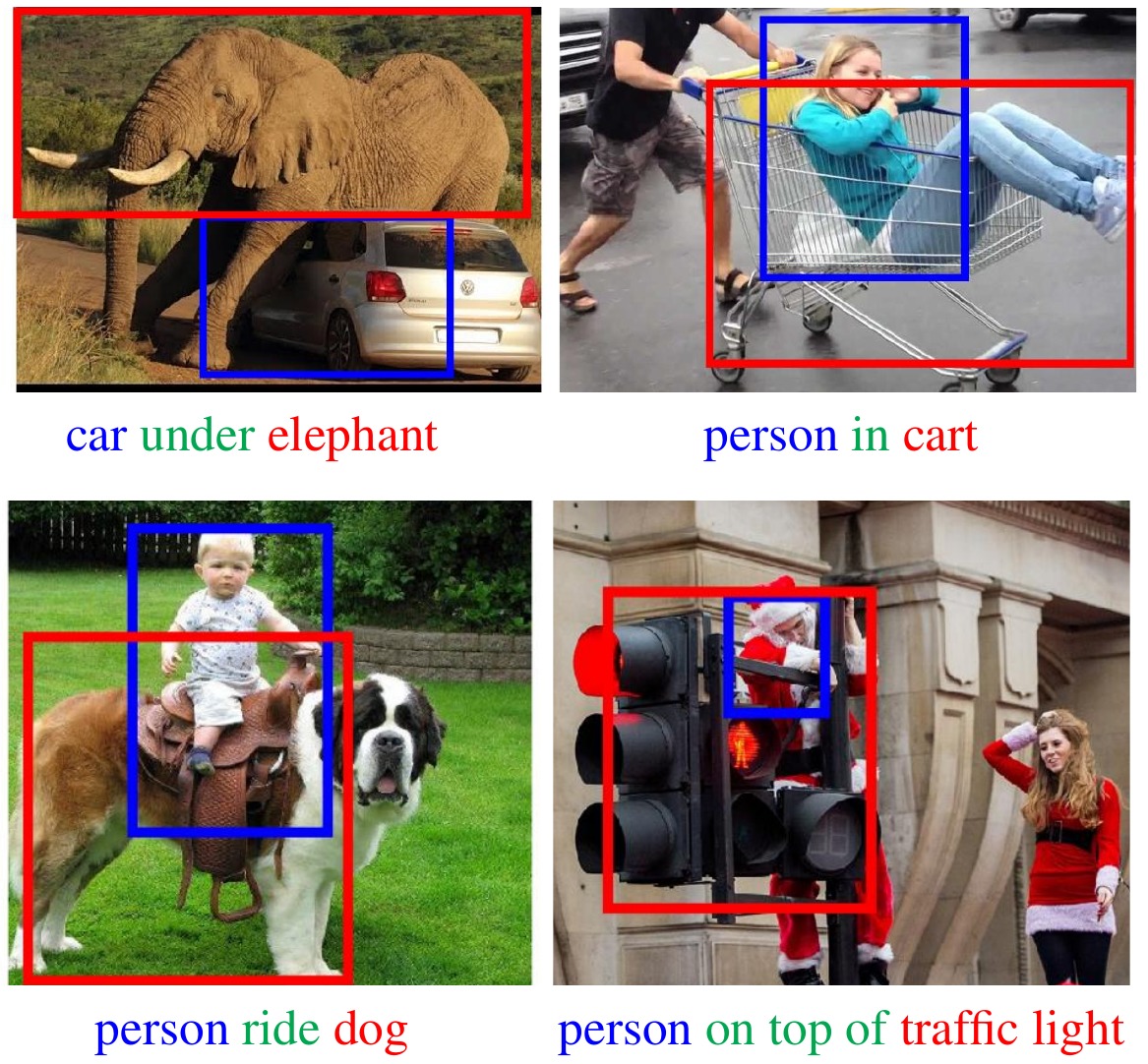Section: New Results
Category-level object and scene recognition
SCNet: Learning semantic correspondence
Participants : Kai Han, Rafael S. Rezende, Bumsub Ham, Kwan-Yee K. Wong, Minsu Cho, Cordelia Schmid, Jean Ponce.
In this work we propose a convolutional neural network architecture, called SCNet, for learning a geometrically plausible model for establishing semantic correspondence between images depicting different instances of the same object or scene category. SCNet uses region proposals as matching primitives, and explicitly incorporates geometric consistency in its loss function. An overview of the architecture can be seen in Figure 5. It is trained on image pairs obtained from the PASCAL VOC 2007 keypoint dataset, and a comparative evaluation on several standard benchmarks demonstrates that the proposed approach substantially outperforms both recent deep learning architectures and previous methods based on hand-crafted features. This work has been published in [13].
|
Kernel square-loss exemplar machines for image retrieval
Participants : Rafael S. Rezende, Joaquin Zepeda, Jean Ponce, Francis Bach, Patrick Pérez.
In this work we explore the promise of an exemplar classifier, such as exemplar SVM (ESVM), as a feature encoder for image retrieval and extends this approach in several directions: We first show that replacing the hinge loss by the square loss in the ESVM cost function significantly reduces encoding time with negligible effect on accuracy. We call this model square-loss exemplar machine, or SLEM. An overview of the pipeline can be seen in Figure 6. We then introduce a kernelized SLEM which can be implemented efficiently through low-rank matrix decomposition, and displays improved performance. Both SLEM variants exploit the fact that the negative examples are fixed, so most of the SLEM computational complexity is relegated to an offline process independent of the positive examples. Our experiments establish the performance and computational advantages of our approach using a large array of base features and standard image retrieval datasets. This work has been published in [19].
|
Weakly-supervised learning of visual relations
Participants : Julia Peyre, Ivan Laptev, Cordelia Schmid, Josef Sivic.
This paper introduces a novel approach for modeling visual relations between pairs of objects. We call relation a triplet of the form where the predicate is typically a preposition (eg. 'under', 'in front of') or a verb ('hold', 'ride') that links a pair of objects . Learning such relations is challenging as the objects have different spatial configurations and appearances depending on the relation in which they occur. Another major challenge comes from the difficulty to get annotations, especially at box-level, for all possible triplets, which makes both learning and evaluation difficult. The contributions of this paper are threefold. First, we design strong yet flexible visual features that encode the appearance and spatial configuration for pairs of objects. Second, we propose a weakly-supervised discriminative clustering model to learn relations from image-level labels only. Third we introduce a new challenging dataset of unusual relations (UnRel) together with an exhaustive annotation, that enables accurate evaluation of visual relation retrieval. We show experimentally that our model results in state-of-the-art results on the visual relationship dataset significantly improving performance on previously unseen relations (zero-shot learning), and confirm this observation on our newly introduced UnRel dataset. This work has been published in [18] and example results are shown in Figure 7.
|
Convolutional neural network architecture for geometric matching
Participants : Ignacio Rocco, Relja Arandjelović, Josef Sivic.
We address the problem of determining correspondences between two images in agreement with a geometric model such as an affine or thin-plate spline transformation, and estimating its parameters. The contributions of this work are three-fold. First, we propose a convolutional neural network architecture for geometric matching, illustrated in Figure 8. The architecture is based on three main components that mimic the standard steps of feature extraction, matching and simultaneous inlier detection and model parameter estimation, while being trainable end-to-end. Second, we demonstrate that the network parameters can be trained from synthetically generated imagery without the need for manual annotation and that our matching layer significantly increases generalization capabilities to never seen before images. Finally, we show that the same model can perform both instance-level and category-level matching giving state-of-the-art results on the challenging Proposal Flow dataset. This work has been published in [20].
|






